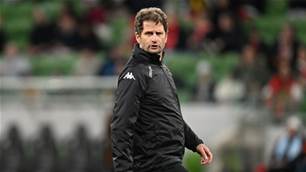The W-League and WNPL are unable to sustain the weight of talent searching for professional opportunities, and without action, Australian football may begin to haemorrhage its best and brightest.
There are 74 NPLW clubs around Australia. That means a lot of talented female footballers waiting to fulfil their potential.
However, the opportunity for these footballers to make it to the next stage is significantly limited, with only nine W League clubs providing women in Australia the chance to play semi-professional football at the national level.
That means around 180 W League roster spots available before taking out visa players. This means 1,400 NPLW players around Australia fighting for less than 180 W league places. Pythagoras himself will be scratching his head as to how this makes sense.
The incentive for young women to fork out big dollars to train 3-4 times per week is low enough as it is, with little financial reward available in female football. However the lack of opportunity to even make it to our premier national women’s competition is fast becoming a major factor as well.
In the end, the game will suffer if females simply walk away from the game.
Recent South Melbourne recruit Caitlin Pickett, who has been in the NPLW system for the past four years, says that giving local players a bigger chance to play in the W League will only motivate them to stay in the NPLW.

“If female footballers know there are more opportunities in the W League, they will likely stay in the NPLW for longer and work harder,” said Pickett.
“If there is a bigger incentive, naturally players will seek to improve their game so they can be recognised, which makes our product better in the long run.”
To play elite level football, females (and males for that matter), need to juggle work and study. It is not an easy thing but many ambitious footballers will make the effort.
However, at some point most will start to question if it’s all worth it. Not everyone will become a Sam Kerr, after all.
Expanding the W League is something that needs to happen sooner rather than later. Many will argue there isn’t sufficient talent available at the moment, but provide the right incentive and you may find better female footballers in the long run to fill the spots.
At a minimum, every A-League club should have a W League team. At present, Central Coast, Wellington and Western United don’t have a female equivalent. Western United have only just come in, so they need a year or two to get a female program up and running.
Central Coast did once have a team but it fell by the wayside back in 2011. Wellington could be the pinnacle for our Kiwi friends across the Tasman, but the cost of travelling to Australia every second week makes it a major challenge.
Related Articles

'Timing not right': Montemurro's verdict on Matildas vacancy

Matildas: 'Fourth at the Olympics is honestly the worst place you could come'
.jpg&h=172&w=306&c=1&s=1)












